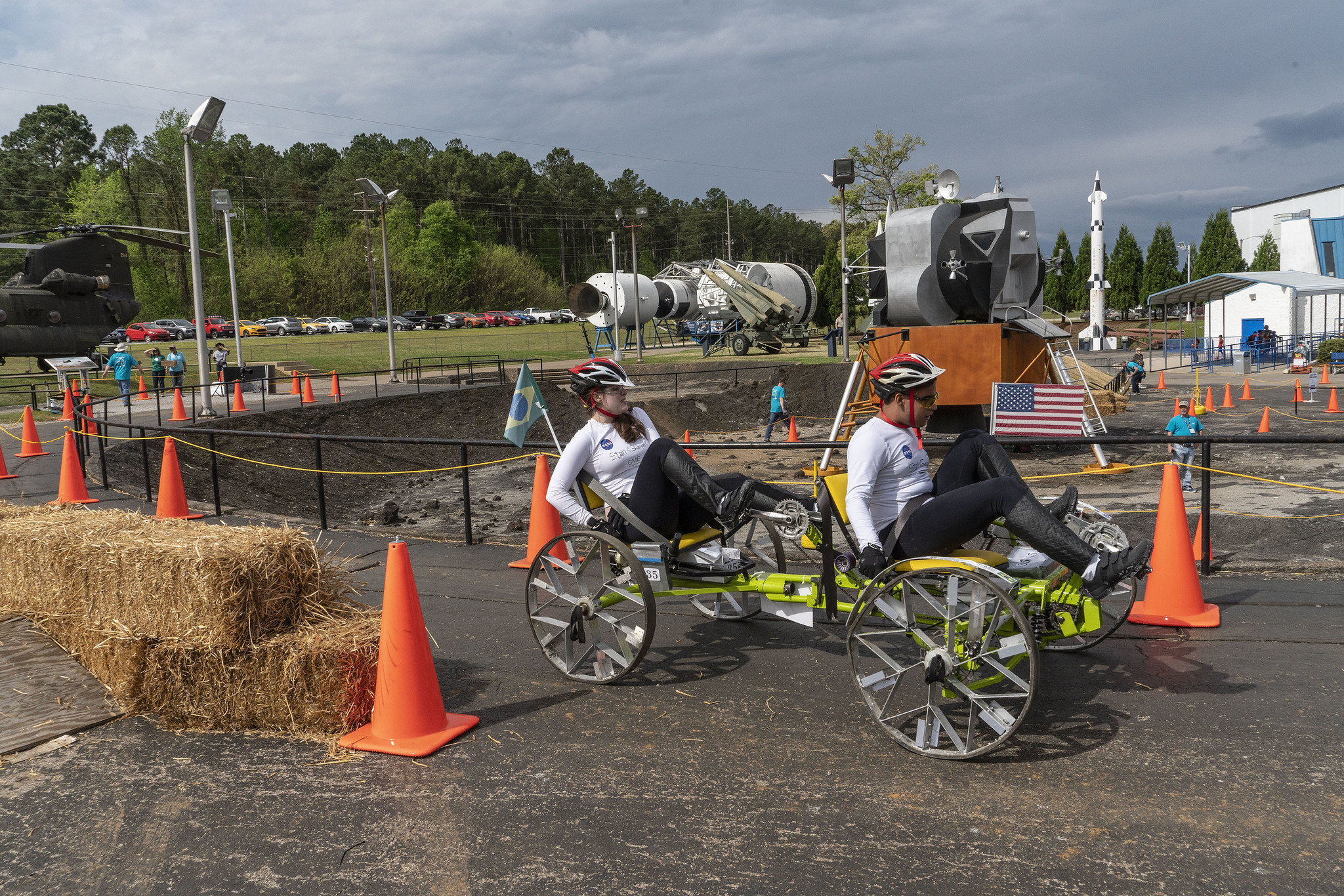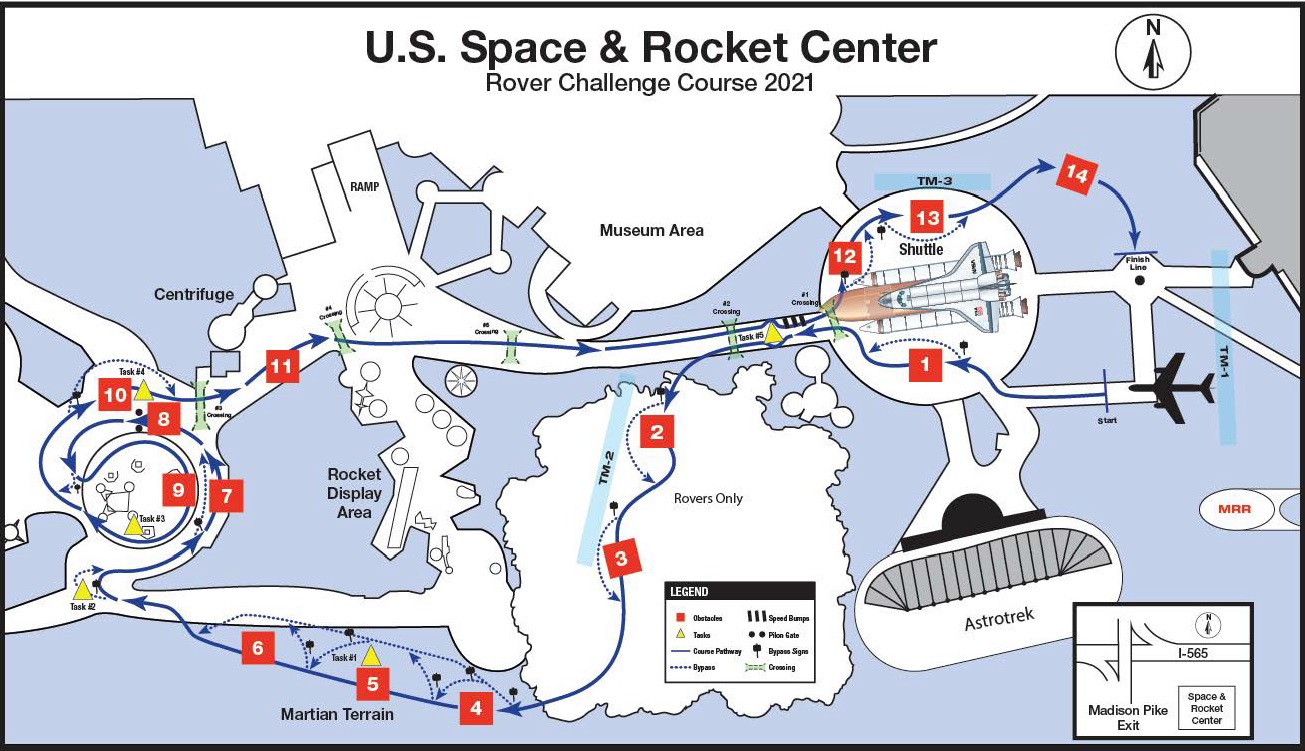Nearly 50 years ago, the first crewed lunar rover was driven on the surface of the Moon. Today, students from around the world – the Artemis Generation – are using the inspiration of the Apollo missions, the goals of the Artemis program, and their own ingenuity to design and build rovers for NASA’s Human Exploration Rover Challenge – HERC – to be held at the U.S. Space & Rocket Center in Huntsville, Alabama, April 15-17.
On Nov. 13, NASA announced the 86 teams competing in the 27th annual event. Representing 22 U.S. states, the District of Columbia and Puerto Rico and 8 countries, the students will pilot human-powered rovers that they designed, built, and tested over a grueling half-mile course simulating terrain found on the Moon, Mars, and other rocky bodies in the solar system.
The course is composed of 14 obstacles and five tasks. Teams will be required to think like mission planners, developing strategies for efficiency and speed, to score the maximum points available within the eight-minute time limit. That time limit represents a virtual oxygen supply and emphasizes the importance of planning a mission to accomplish as many objectives as possible while balancing available time and resources.
New to the competition for 2021 will be the ice geyser slalom obstacle and the core sample retrieval task, which were slated to debut in the 2020 competition in Huntsville before the coronavirus (COVID-19) pandemic forced a cancellation of the excursion days.
Another unique aspect of the competition is the requirement that teams design and fabricate their own wheels, with the exception of the central hubs, which can be commercially purchased. Previous competitions featured precision-cut cardboard wheels, welded metal wheels, and 3D-printed wheels.
In the event the ongoing pandemic forces modifications to the competition – including changes to planned in-person activities – competitors and audiences will be notified.
HERC, managed by the Office of STEM Engagement at NASA’s Marshall Space Flight Center in Huntsville, reflects the goals of the Artemis program, which seeks to put the first woman and next man on the Moon by 2024. It is one of the seven Artemis Student Challenges NASA’s Office of STEM Engagement uses to further the agency’s goal of encouraging students to pursue degrees and careers in the science, technology, engineering, and mathematics fields. Students may also participate in NASA’s newest competition to inspire the next generation– the Artemis Moon Pod Essay Contest. The contest which is open to U.S. students in grades K-12, launched on Tuesday, Sept. 15 and runs through Dec. 17, 2020, challenging participants to imagine leading a one-week expedition to the Moon’s South Pole.
For more information about the 2021 Human Exploration Rover Challenge, visit:
https://www.nasa.gov/roverchallenge
For more information about other NASA engineering challenges, visit:































